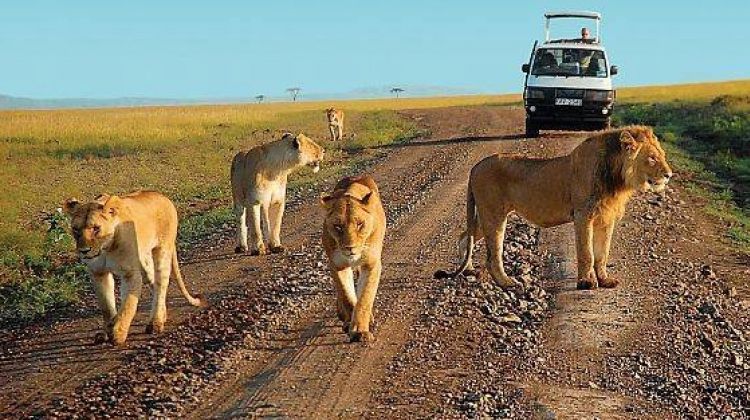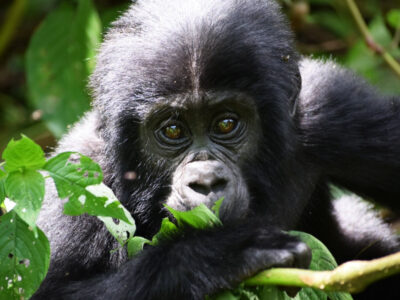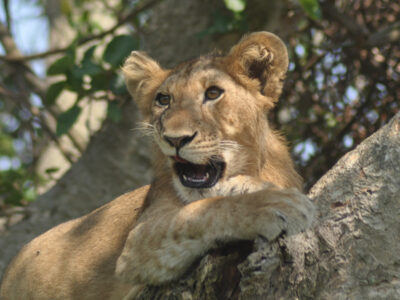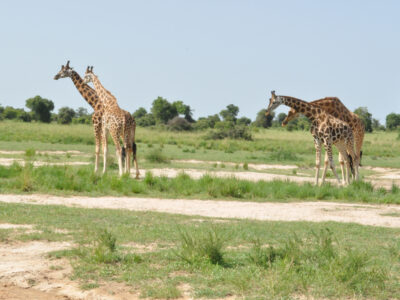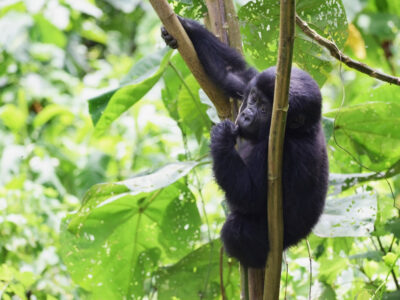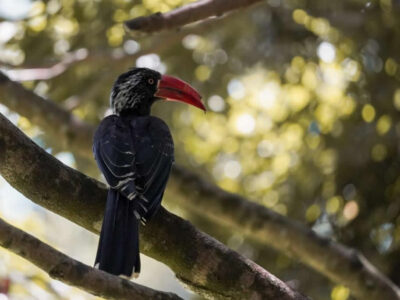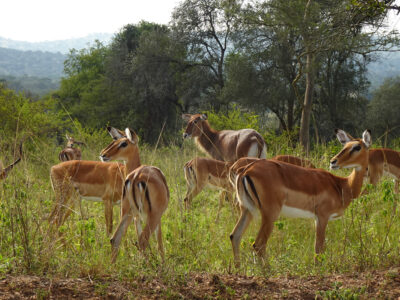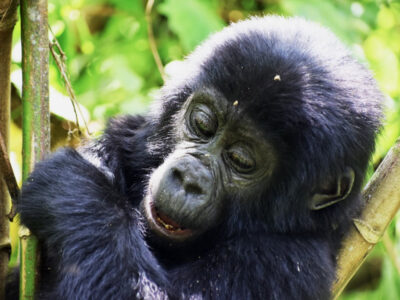In Uganda, what is being touted as the largest, most comprehensive count of African lions has painted a grim picture in some areas and a marked hope for others.
From January 2022 to January 2023, according to a report by three of the lead participants in the survey carried out by more than 100 Ugandan and international collaborators, driving over 26,000km and recording 7,516 camera trap nights from 232 locations spanning a year.
In terms of protected area size, and historic presence of carnivores, the surveys were done in six of Uganda’s most important protected areas for large carnivores that is the Kidepo Valley National Park (1430 sq km), Pian Upe Wildlife Reserve (2400 sq km), Murchison Falls National Park (4000 sq km), Toro Semliki Wildlife Reserve (542 sq km), the Queen Elizabeth Conservation area (comprising the National Park and its associated wildlife reserves 2400 sq km), and Lake Mburo National Park (376 sq km).
Lions are listed as critically endangered on the national red list of Uganda and are known to occur in three of its largest national parks; Murchison Falls, Queen Elizabeth and the Kidepo Valley. The Queen Elizabeth Conservation Area (QECA); comprising the National Park and the Kyambura and Kigezi Game Reserves, has been viewed as one of Uganda’s lion strongholds.
The Conversation, on March 25 by Alexander Richard Braczkowski, Arjun M. Gopalaswamy, and Duan Biggs paints a grim picture about lions in the QECA. But the report was published in the online academic journal.
It says only 39 lions are in the Queen Elizabeth National Park, home to the tree-climbing lions. Since their last survey in 2018, they say this is a marked decline of over 40%.
In the country’s Northeast, in Kidepo Valley, the best estimate is just 12 individual lions across 1,430km², in stark contrast with the previous estimate of 132 lions implemented nearly 15 years ago.
The researchers said that in the majestic Murchison Falls National Park, through which the River Nile runs east-west, they estimated that approximately 240 lions still remained across some 3,200km² of sampled area. This is the highest number in Uganda and at least five to 10 times higher than in the Kidepo and Queen Elizabeth parks.
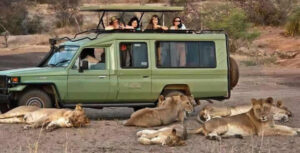
At the Centre, Braczkowski and Gopalaswamy are respectively researchers for Planetary Health and Resilient Conservation Group, Griffith University, and the Department of Conservation Management, Nelson Mandela University in South Africa. Duan Biggs is Professor and Chair, Southwestern Environmental Science and Policy, Northern Arizona University in the U.S. He is also a member of the IUCN (World Conservation Union). Aggrey Rwetsiba, senior manager, research and monitoring at Uganda Wildlife Authority, contributed to the research on which The Conversation article was based.
Due to their culture of climbing trees, may have led field workers to be satisfied in applying less-robust lion monitoring methods in the QECA according to the researchers, past unusually high detection rates of lions in the QECA. This and the use of these different enumeration methods, which often have underestimated and the wide confidence intervals, makes robust inference about population trends difficult.
They point out that for nearly 15 years, almost no information has been available on the population status of Uganda’s large carnivores, including those in its largest national park, Murchison Falls.
“Although these species represent a critical part of Uganda’s growing tourism economy, with each lion in the Queen Elizabeth Conservation Area (QECA) generating at least US$ 14,000 annually from ecotourism revenue, according to estimates made in 2006, the populations of this flagship species have not been monitored consistently over time.” They say.
After for this unique behavior. the country is home to the famed tree-climbing lions, which are much sought. Annually from safari viewing and allied activities, together, lions and leopards generate tens of thousands of dollars.
They say that keeping an eye on the proverbial prize could not be more critical for the country. When wildlife isn’t monitored rigorously, populations can disappear within just a few years, as tigers did in India’s Sariska tiger reserve.
“Many people work in conservation discouraging monitoring. They argue that a “bean counter” approach to conservation overlooks the funds and actions that save animals.” Researchers say.
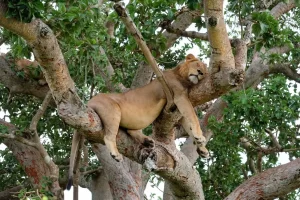
In September 2020, one such article entitled: ‘Half of resources in threatened species conservation plans are allocated to research and monitoring’ was published by Rachel T. Buxton and others in the journal Nature Communication.
To guide effective actions, funds to combat biodiversity loss are insufficient, requiring conservation managers to make trade-offs between costs for actions to avoid further loss and costs for research and monitoring.
Using species’ management plans for 2,328 listed species from three countries, they showed that 50% of species proposed recovery plan budgets are allocated to research and monitoring. Ironically, however, overall, species with higher proportions of budgets allocated to research and monitoring have poorer recovery outcomes.
The authors said that they provide recommendations for careful examination of the value of collecting new information in recovery planning to ensure that conservation programmes emphasize action or research and monitoring that directly informs action.
“It is a hard thing to do at scale and particularly for animals that are naturally shy, have big home ranges (sometimes over multiple countries), and occur in very low numbers.” Others say.
“Even in a comparatively small African country – Uganda ranks 32nd in size out of 54 countries – how does one cover enough ground to see how populations of carnivores are faring? This has been the challenge of our work in Uganda for nearly a decade now, monitoring African lions, leopards and spotted hyenas.”
“Their studies sought to address the problem by drawing on a wide range of local and international experts who live and work in Uganda” the Uganda lion survey authors say.
To identify and bring together independent scientists, government rangers, university students, lodge owners and conservation managers in the country’s major savanna parks, the Ugandan government’s Uganda Wildlife Authority research and monitoring team works together.
They said that they hoped to cover more ground with people and organizations that wouldn’t traditionally work together. Doing so exposed many of these individuals for the first time to the science and field skills needed to build robust, long term monitoring programmes for threatened wildlife.
The result is the largest, most comprehensive count of African lions, leopards and spotted hyenas. The researchers say they found spotted hyenas to be doing far better than they expected.
They said that lions are in worrying decline, indicating where conservation efforts need to be focused. When it comes to generating data that could help save animals, their count proved the value of collaborating.
Unique approach.
Inspired by Kenya’s first nationwide, science-based survey of lions and other carnivores in key reserves, the first important step of this study was to secure the collaboration of the Uganda Wildlife Authority’s office of research and monitoring.
They together identified the critical conservation stakeholders in and around six protected areas including Pian Upe Wildlife Reserve, Kidepo Valley, Toro Semliki, Lake Mburo, Queen Elizabeth and Murchison Falls. Leopards and hyenas occur in some other parks (such as Mount Elgon and Rwenzori National Park) but resource constraints prevented the researchers from surveying these sites.
They said that they had no predisposed notions of who could or would participate in our carnivore surveys, only that we wanted people living closest to these species in the room.
They shortlisted lodge owners, government rangers, independent scientists, university students from Kampala, NGO staff and even trophy hunters.
To learn about how to find carnivores in each landscape, build detection histories and analyse data, all came together for a few days. The researchers delivered five technical workshops showing participants how to search for African lions in the landscapes together with mapping exactly where they drove.
They also taught participants: how to identify lions by their whisker spots in high-definition photographs – these are the small spots where a cat’s whiskers originate on their cheeks, how to determine identity in camera trap images of leopard and spotted hyena body flanks, post data collection analysis techniques, and a technique to estimate population densities and abundance.
From January 2022 to January 2023, more than 100 Ugandan and international collaborators joined in the “all hands on deck” survey, driving over 26,000km and recording 7,516 camera trap nights from 232 locations spanning a year.
Their scientific approach focused on how to achieve the best possible counts of carnivores. In the process they identified some of the biggest shortcomings of previous surveys. These included double counting individual animals and failing to incorporate detection probability. Even worse was simply adding all individual sighted animals and not generating any local-level estimates.
What the results mean.
In contrast to lions, leopards appeared to continue to occur at high densities in select areas, with Lake Mburo and Murchison Falls exhibiting strong populations. Pian Upe and Queen Elizabeth’s Ishasha sector recorded the lowest densities.
Spotted hyenas have proven far more resilient. They occur at densities ranging from 6.15 to 45.31 individuals/100km² across surveyed sites. In Queen Elizabeth, their numbers could be rising as lion populations decline, likely due to reduced competition and ongoing poaching pressure targeting lions.
These findings underscore the urgent need for targeted conservation interventions, particularly for lions in Uganda’s struggling populations.
Value beyond numbers.
“Our approach shared the load of data collection and gave people an opportunity and skills to engage in wildlife science.” the researchers said.
They said that for many emerging conservationists in the country, this was their first chance to be authors on a scientific paper (an increasingly important component of postgraduate degree applications),
“Even if many of the people we worked with disagree on how to save large carnivores in Uganda, they could at least agree on how many there are as they had a hand in collecting the data and scrutinizing it. Since we have embraced a fully science-based approach, we recognize that our surveys too should improve over time.”

